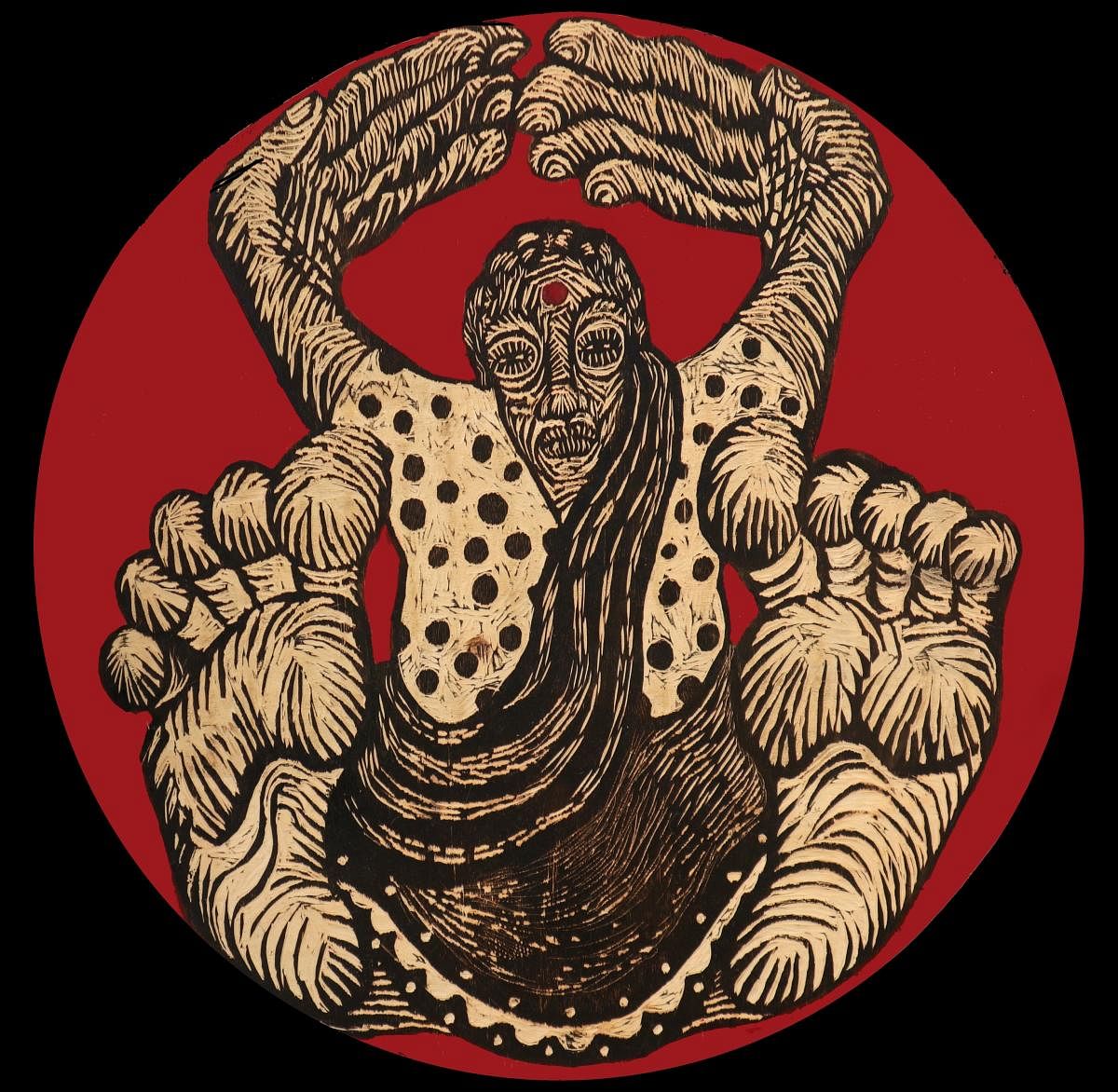

A cathartic exploration, Muse, the latest exhibition at Kalaghoda, Method Art Gallery in Mumbai pushes back traditional patriarchal viewpoints in a curated collection of artworks by women artists pan-India.
For centuries, either women have been defied or objectified in artistic ruminations. The men have predominantly wielded the narrative, and the forms of the female muse that we have seen on canvas and beyond, have been interpreted through their eyes, coloured with their own perspectives, subjective interactions and consolidated experiences. Being the recipient of benevolent sexism, predominantly, the female voice as lived by a woman has hardly found expression in art. Through Muse, the cluster of 18 women artists drawn in from Puducherry, Lucknow, Delhi, Mumbai, Coimbatore, Pune, Kashmir and beyond, unveils the tacit layers of the emotional prism of the female mind, dipping into the crucible of personal experiences. These are artists who have been waiting to share the narrative of their own thoughts and forms in response to the age-old artistic interpretation of the woman. Call it personal feminist expressive art therapy that breaks away from compliance with traditional gender roles. Says Aparna Varma, co-curator of Muse at Method Kalaghoda, “There is no shortage of women creating great art. We have chosen to display a wide range of perspectives and approaches because there isn’t a singular experience as to what it means to be a woman or portray a woman. I think that itself is the unifying thread among the art regardless of region or community.”
Lucknow-based Smriti Rastogi shapes herself as an irregular form, addressing the ambiguity in her life by unravelling several layers. Her thoughts, gestures and actions thread through her work, as a peep into her inner being, an expansive rumination of the space she is in, and wants to be in. The pool of blue with tonal gradations brings in depth and suffuses the onlooker with the potency of brooding emotions that gurgle around her. Anger and melancholy, stemming from the universal gender bias and socio-political oppression, colour the works of Portia Roy from Delhi as she engraves on plywood. The female form is depicted locked inside a crimson sphere, trying to break out, through the chains of anathema and prejudice. It is a dervish of emotions that Shuchi Satyavanshi plunges into, mirroring her struggle with mental illness. The fading raw, repetitive figures and the interlocking ripples that magnify and consume, draw in an immeasurable depth and complexity. The matrix of thoughts, emotions and feelings that a woman experiences at different stages in her life form the sustained metaphor in the artwork trio. Colours play a pivotal role in mirroring the multiplicity of roles and emotions that play out within the female mind. Even Smita Sahu-Hamzeh’s repetition of the urban, multi-tasking woman is evocative of this. Perhaps losing her own identity amidst the role play, as depicted in the hazy forms. Then emerges the moment in time, a realisation of self-worth. Interdisciplinary artist Vridhhi Chaudhry from Toronto, strokes a tribute to the resilient female spirit, saluting her as a born survivor in the face of adversity. The softness of the lotus as it emerges from the pool of speckled slush and lily pads forms a sharp contrast against the canvas of challenges thrown up by life. In conversation with one’s own self, and then moving into Mumbai-based artist Tara Anand’s female-driven narrative, of two women, mutual confidantes, immersed in conversation. It is a riveting vocabulary of colours and contours, tracing the crests and troughs of the female mind. The caste conduit explodes in Kiran Dayal’s work replete with symbolism, in clay, paper, tape, and oil. It is a hypnotic creation, exploring diverse identities, and societal hypocrisies as an impediment to inclusivity and equality.